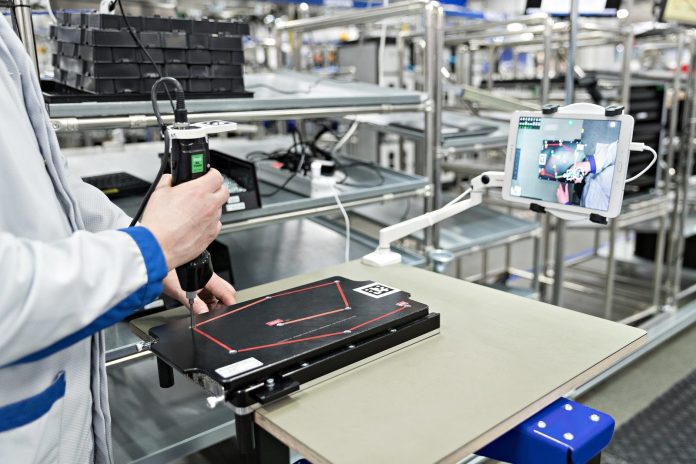Nokia has reduced lead times for base station prototypes at factories in Finland and India by 50 per cent with the use of augmented reality (AR) for training on its product assembly lines, it has said. The company is using industrial AR – as well as virtual reality (VR), it has said – to train employees on assembly processes at its factories in Oulu in Finland and in Chennai in India, which produce “tens of different models” each month.
“With changing product demands, we need to be more flexible and agile to quickly shift production,” said Dave Nowoswiat, manufacturing marketing strategist at Nokia’s enterprise division, speaking with Enterprise IoT Insights for an upcoming report on the role of AR in manufacturing, as part of the ongoing Digital Factory Solutions series.
He said: “Getting employees trained to assemble new products is essential to maintain throughput. AR/VR enables them to gain this experience virtually, off line, so they can quickly ramp up productivity.” The user experience for staff in Oulu and Chennai has been good, and lead times on prototypes have been slashed.
“Training with AR/VR has been well received,” he stated, implying as well that younger generations are, inevitably, more comfortable with new digital solutions, and that head-worn AR/VR equipment takes time to get used to. Nokia is using “off-the-shelf” headsets, it said, customised for its own purposes
“It is generally well accepted by the workforce with quicker adoption and ease of use with new entrants. However, it does take some time and effort to get used to the headset and the way of working,” said Nowoswiat.
He highlighted other use cases besides, to provide on-site instructions, diagrams and visual aids to assist in maintenance and trouble-shooting activities. Industrial applications of VR can also be used to review and simulate the product design and ‘manufacturability’ from a factory point of view, he suggested.
The Oulu setup is running on a private LTE (Nokia’s so-called 4.9G solution), which uses local spectrum from Finnish firm Edzcom (formerly Ukkoverkot). Processing of AR and VR data in Oulu takes place on site – “locally, within the factory,” said Nokia. The difference is the ‘edge’ shifts to the device itself in the case of VR, and exists in the private mobile network itself (MEC) for AR.
Enhanced LTE is good enough to support AR/VR for training staff on the assembly line, said Nowoswiat. But industrial AR and VR will migrate onto standalone 5G networks as they are available, and compatible equipment becomes available. “In the future, it will potentially move to 5G, once headsets are available to bring an even richer user experience,” he said.
Behind the scenes, the challenge with industrial AR, however, is to reveal a digital thread and construct a digital twin to bring digital models of processes, systems, and products to life.
Nowoswiat remarked: “Building a digital twin requires significant commitment and investment of resources to start with. It is literally creating a computer-based model for everything that is done physically. Once completed, it makes new product manufacture introduction so much easier, as we are able to simulate the real-life experience before the activities are started and we can monitor the lines in operation.”

